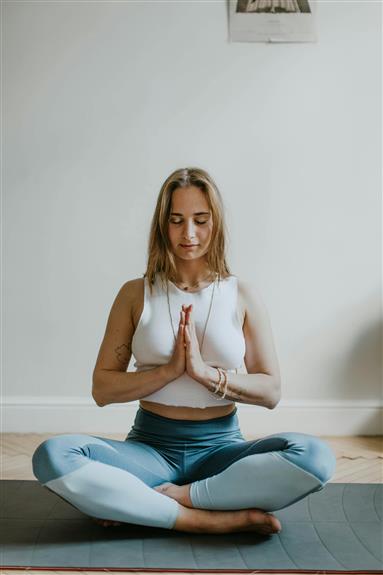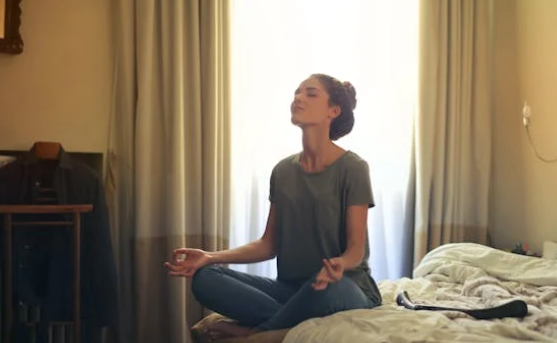
For many people, the idea of meditation sounds peaceful in theory but deeply impractical in reality. You picture yourself sitting on a cushion, eyes closed, back straight, breathing slowly—only to be immediately ambushed by an army of thoughts: work tasks, dinner plans, laundry, texts you haven’t answered. Before long, you’re frustrated, twitchy, and convinced meditation just isn’t for you.
The truth is, stillness doesn’t come easily to everyone. Some people simply aren’t wired to sit in silence for 20 minutes at a time. Others don’t have the luxury of a quiet space. And some have lived so long in high-alert mode—multitasking, caregiving, responding—that the idea of “clearing your mind” feels more like a chore than a gift.
Enter micro-meditation: a gentle, accessible way to bring awareness into your day without needing to become someone else first.
What Is Micro-Meditation?
Micro-meditation is exactly what it sounds like—short, intentional moments of awareness, typically lasting anywhere from 30 seconds to a few minutes. It doesn’t require special equipment, fancy techniques, or an hour carved out of your morning routine.
Instead of trying to pause your life to meditate, micro-meditation meets you where you are: in the car, in the shower, in line at the grocery store, or at your desk between emails.
It’s not about escaping your day—it’s about checking in during it.

Why Short Moments Matter
We’re often taught that mindfulness requires long stretches of silence or detachment from the world. But that model overlooks how real people live. For those with busy schedules, noisy households, anxious minds, or restless bodies, smaller doses can be more effective—and more realistic.
What matters isn’t how long you meditate. It’s how often you come home to yourself.
Short moments of grounded awareness create space between the noise. They remind your nervous system that you’re not in constant danger. They help you respond instead of react. And they build a muscle over time—one that lets you handle stress, discomfort, and distraction with more steadiness.
What Micro-Meditation Can Look Like
You don’t have to light a candle or sit cross-legged to practice mindfulness. You just need a moment of presence. Here are a few ways micro-meditation can look in everyday life:
1. The 60-Second Breath Reset
When you feel overwhelmed, pause. Set a timer for one minute. Close your eyes (if it’s safe to do so) and just breathe. Don’t try to control it—just notice the air going in and out. Let the rest of the world blur for that minute.
No one will notice. But you will.
2. The Shower Scan
While you’re in the shower, bring your attention to the sensation of water on your skin. The sound. The temperature. The weight of your body. Use this time not to rehearse your to-do list, but to notice that you’re here, alive, and safe.
It’s not “wasted” time. It’s already yours—claim it.
3. Mindful Waiting
Instead of grabbing your phone while waiting—at the doctor’s office, in the pickup line, or on hold—take a few seconds to feel your feet on the ground. Breathe in through your nose, out through your mouth. Let your shoulders drop.
That moment of pause is enough.
4. Walking Awareness
If sitting still makes your skin crawl, don’t. Micro-meditation can happen while walking. Try this: Walk a little slower than usual. Feel each step. Notice your surroundings. Not to judge or evaluate—just to be in your body while moving.
Movement doesn’t cancel out mindfulness. It often enhances it.
5. Three Deep Breaths Before You Speak
Right before you send a tough email, respond to a message, or speak in a meeting, try this: Three deep breaths. That’s it. Three conscious inhales and exhales. This moment of self-contact often changes what we say—or how we say it.
6. The “One Thing” Pause
Pick one task—washing a dish, folding laundry, drinking your coffee. Do it with your full attention. Feel the warmth, the weight, the texture. Even just 60 seconds of doing one thing slowly, on purpose, brings your mind and body back together.
Why It Works (Even If You Think It Won’t)
If you’re skeptical, you’re not alone. Many people assume that unless a practice is long or intense, it can’t “count.” But mindfulness isn’t a test. There’s no final exam. No one’s grading you.
What micro-meditation does is change your relationship to time and attention. It reminds you that you’re allowed to stop—even briefly. You’re allowed to be a person, not a machine. You don’t need to fix your life in one sitting. You just need to notice that you’re alive in this one moment.
And if that sounds too subtle to matter, think of it like drops of water wearing down stone. Small, repeated acts of presence can shift the way you move through the world.
Letting Go of the “Perfect Practice”
Micro-meditation also frees you from the need to do mindfulness “right.” There’s no pressure to achieve inner peace on a schedule. No need to become the calmest person in the room. The point isn’t perfection—it’s permission.
Permission to pause.
Permission to check in.
Permission to feel whatever you’re feeling, without rushing past it.
Mindfulness isn’t about becoming a monk. It’s about becoming more yourself.
Who Micro-Meditation Is Especially Good For
- People with anxiety who find long meditation overwhelming
- Busy parents, caregivers, or shift workers
- ADHD minds that struggle with stillness
- People recovering from trauma who feel unsafe closing their eyes
- Anyone who’s curious about mindfulness but put off by the formality of traditional practices
This approach isn’t a shortcut—it’s a different door into the same room.
Final Thoughts
You don’t have to sit still for 30 minutes to be mindful. You don’t need to “clear your mind” or buy special cushions or chant in a quiet room.
You just need a moment—and the willingness to meet it.
In a world that demands our attention constantly, choosing to give that attention to your own breath, your own body, your own mind—even for a minute—is a quiet act of resistance. It’s a return to yourself.
Micro-meditation won’t change your life in one day. But practiced over time, it reminds you that your life is happening now—not later, not when you finally calm down, not when things get easier.
Now.
And you don’t have to sit still to notice that.



